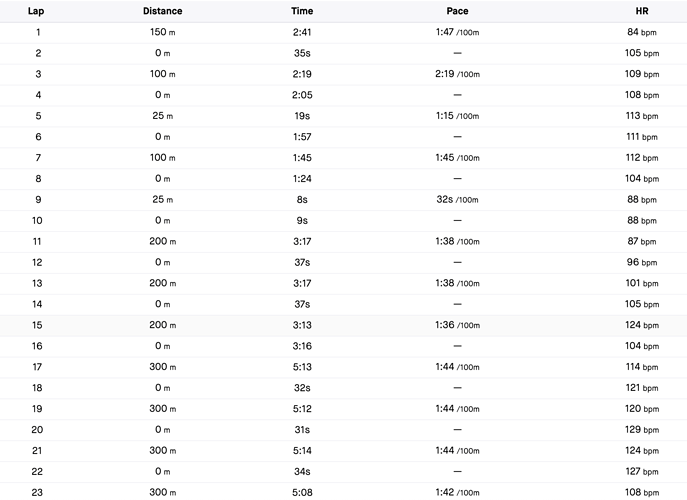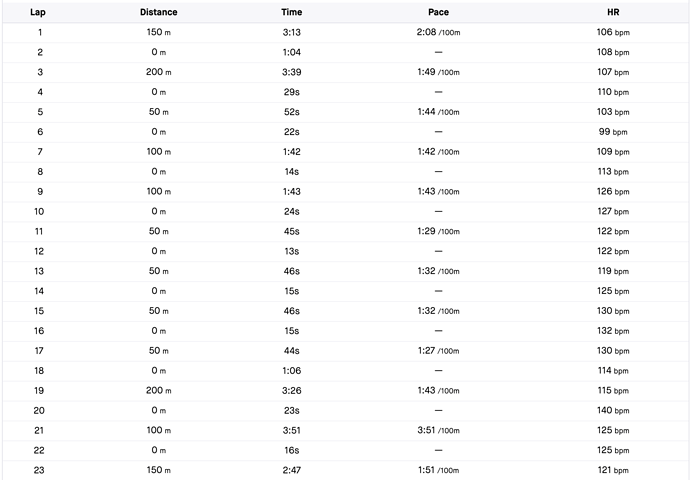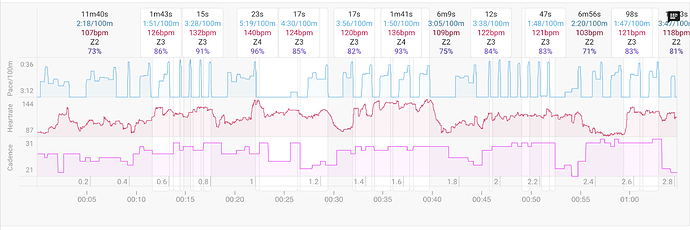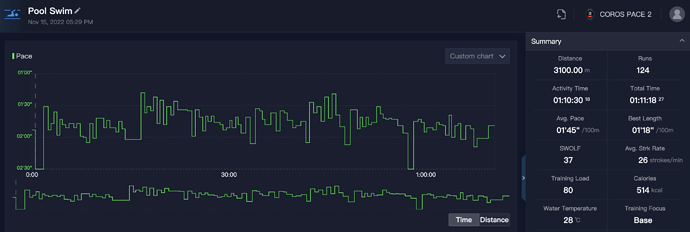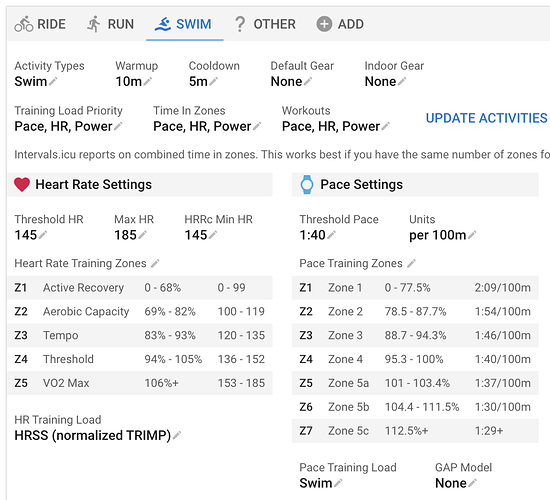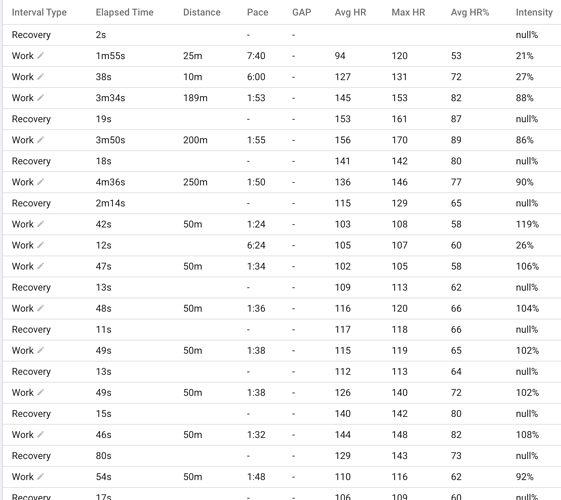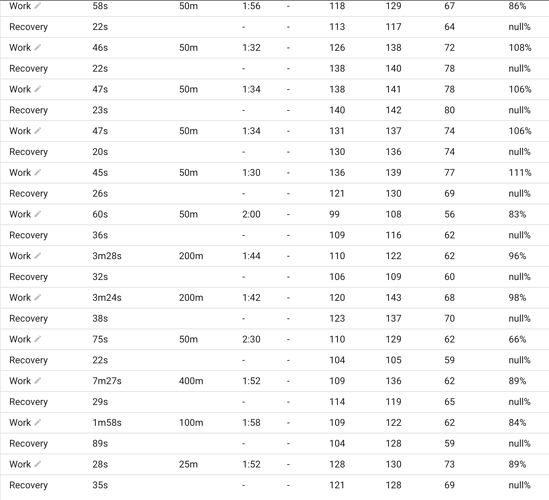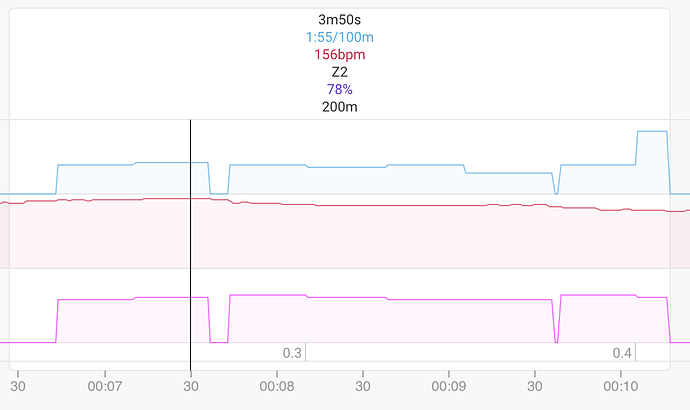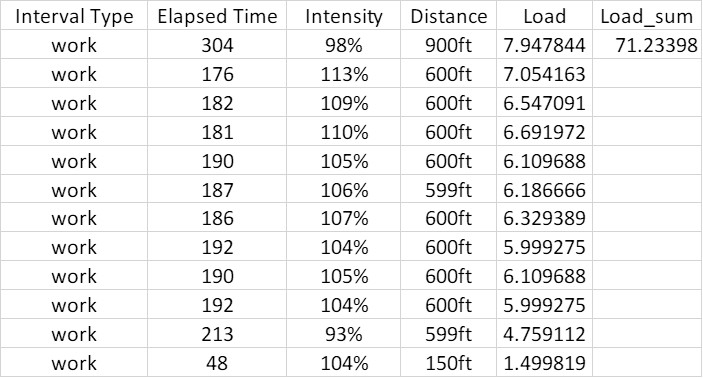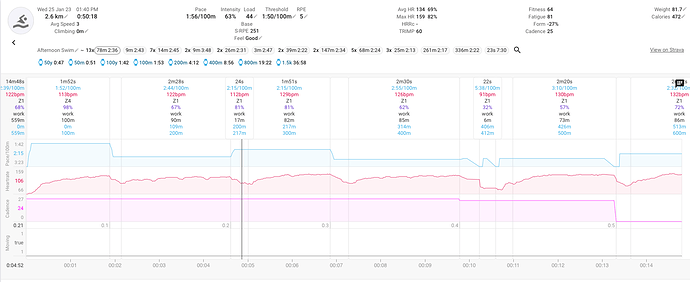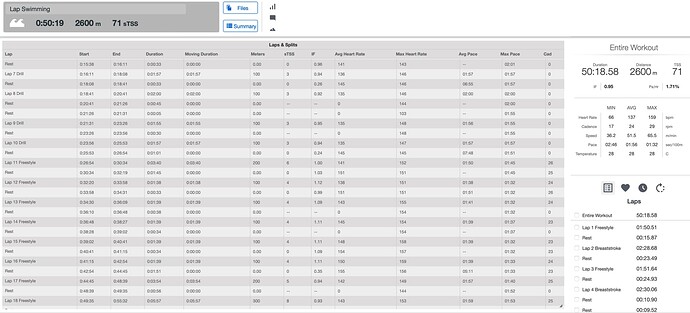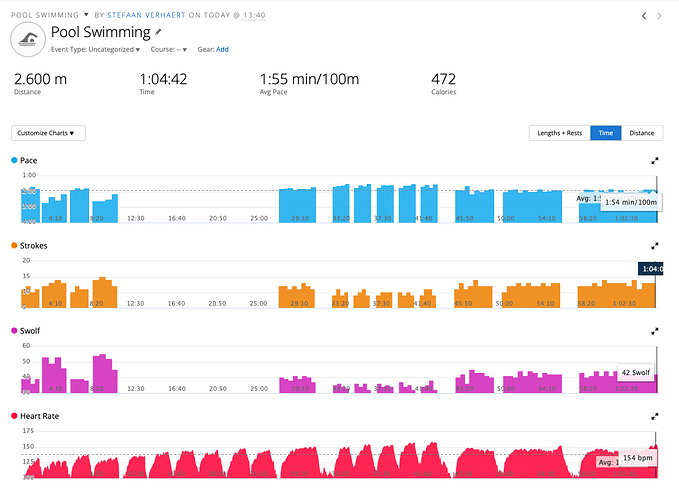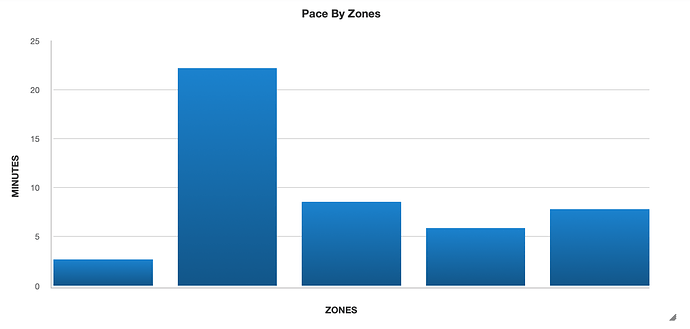Apologies for the delay, Busy work week. And thanks in advance for looking into it again. Makes sense about the historical activities.
I also reread the thread and forgot Daniel and I noted in November that Intervals may miscalculate the total activity/moving time, which could have been a moving time versus elapsed time issue or even a not moving during flip turns issue (and then I got sidetracked with IF calculations). Not sure though if that still applies since the interval data for individual 50/100/200/etc sets seems to be correct in these sessions and it’s just the average pace that’s off. When I look at intensity in the interval data, that seems correct, since it’s all just below or above my threshold and I suppose that then works though to calculating load.
For direct Coros to Intervals uploads, please see examples below (all from last 30 days). I’ve noted the dates and the Intervals/Coros calculated paces as well.
Intervals.icu (17 april; Intervals/Coros average pace 1.31/1.44)
Intervals.icu (13 april; Intervals/Coros average pace 1.35/1.45)
Intervals.icu (30 march; Intervals/Coros average pace 1.32/1.43)
Intervals.icu (27 march; Intervals/Coros average pace 1.24/1.41)
Although I regularly hit sub-1.35 paces on my 50m and 100m intervals, I barely get below 1.35 on longer intervals and definitely not during warm up / drills. So the overall session average pace being faster than my threshold pace seems unlikely (especially when it’s 10 seconds faster than my CSS).
If it helps, our sessions are in 25m pools and generally scheduled as warm up → 50m activation intervals → main set one with a bunch of drills, including some legs only which always result in distance miscalculations on my watch → main set two with 50/100/200/400 intervals at CSS +/- X seconds (sometimes with standing rest, sometimes easy 50/100m in between) → cool down. Sometimes we skip the drills, but not often.
For indirect Coros to Strava to Intervals uploads:
Intervals.icu (16 march; Intervals/Coros average pace 1.45/1.44)
Intervals.icu (13 march; Intervals/Coros average pace 1.51/1.50)
Intervals.icu (9 march; Intervals/Coros average pace 1.46/1.45)
Intervals.icu (6 march; Intervals/Coros average pace 1.43/1.42)
I did notice that Intervals marked everything as work in the indirect Coros/Strava/Intervals uploads but that it still gets the average pace very close even though there’s a lot of unlabeled recovery in there. Since Intervals still got the approximate intensity and load close to what I felt it should be, it worked out fine to track my fitness, etc. For the direct Coros to Intervals uploads, this is no longer the case.
I can provide original fit files for all if you’d like those. Just let me know the preferred way to securely share them. I’d rather not download all old data right now since that’s likely to mess with historical TSS and CIL as well, but I can upload a couple of them just for the troubleshooting.
